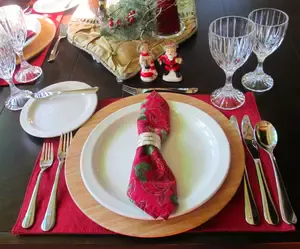Traditional Manners in a
Modern World

We often learn etiquette within the traditions that are passed down from generation to generation, or through specific cultural traditions.
One thing’s for sure, the idea that manners never go out of style is a tradition that lives on!
It's important to each of us that we know what the etiquette is in a given social situation. The trick is that etiquette must be learned. You don't necessarily pick it up on your own. Learning the standards of polite behavior are both observed and practiced.
Traditional Manners Today
The principles of traditional manners and etiquette just don’t change. And consistent practice aims us toward civility.
You don’t learn the importance of these principles from a book, but from your own experience in social groups.
These manners are always in style:
- Being polite
- Being neighborly and friendly
- Being a good sport
- Being kind
- Being gracious
Tradition drives respectful behavior.
~ Emily Post
While these are basic manners we humans all share, the responsibility
for practicing them belongs, bottom line, to each individual. It’s only you who can choose to seek it and to practice it. Only you can aim for “etiquette-ful” behavior.
Etiquette skills help keep you comfortable with yourself. Which, in turn, affords the opportunity to focus on others.
We are forever challenged by changing technology, even as these innovations eventually reveal a newly-found etiquette.
I was recently at a film screening on a university campus, and right
along with the instructions to “Turn off all cell phones!” it was
announced that “Your neighbor will remind you if you’re cheating.”
Some Things Never Change
Knowing the standard traditional manners and practicing your ability to adapt them to individual situations gives you great confidence. You have the security of knowing that each of these are an expression of politeness and kindness. By putting them into action, you are also helping others.
- Greeting, introducing and welcoming others.
And initiating conversations that invite participation and inclusion. - Lending a helping hand when you can.
Holding a door for someone whose arms are full, or offering your seat in the restaurant waiting area. - Letting others go first.
Whether walking on a crowded sidewalk, standing in the grocery line, or at a four-way stop. - Mindfully speaking to and about others.
That’s why we don’t have cell phones on the table, take a call during dinner, are rude or sarcastic about someone’s appearance, gossip, or talk over someone. - Expressing gratitude and appreciation.
Thus, a thank you note is a tradition that will have a long shelf life! - Respecting the privacy, property, and the traditions of others.
Never take something that doesn't belong to you, but show interest the holiday traditions of other cultures. - And yes, eating politely.
Chewing with your mouth closed and not too full, and keeping your table tools to yourself is always mindful.
Have you ever experienced that moment when you realize you haven’t been getting it right? Or when you see others doing things you know aren’t what you would do. Remind yourself of your tradition of good manners. Because even if others aren’t getting it right, you have to strive to set a good example.
Etiquette is about choosing to be the person you’re supposed to be no matter what! It’s about feeling comfortable that you are doing the right thing in certain situations. And this is why traditional manners will always have a place in our modern society.














